Knowledge in a Backpack
The “Forest Backpack” is helping Indigenous communities in Peru banish illegal logging from their lands and improve their living conditions
The manguaré sounds, which is the signal to summon the members of the Huitoto community of Pucaurquillo, located in Loreto, a region in the Peruvian Amazon.
Today is a special day because it brings a visit from Teobaldo Vásquez from the Bora community of Brillo Nuevo. Pucaurquillo and Brillo Nuevo are two of the 14 communities that make up the Federation of Native Communities of the Ampiyacu River and are successfully eliminating illegal logging from their forests.
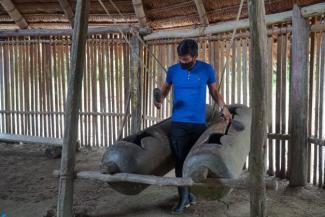
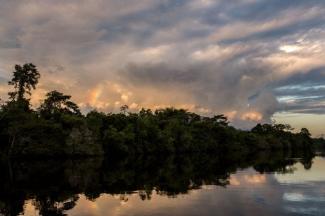
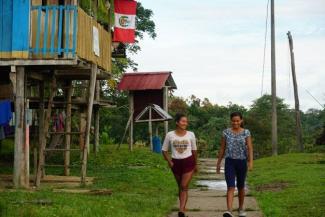
Teobaldo brings along a valuable tool — the “Forest Backpack.” With its contents, the community has learned to calculate the wood volume of trees and increase their knowledge of forest management practices and laws. And this contributes to community members conducting activities in the forest legally.
“In the past, we didn’t calculate the trees’ volume. The timber middleman would come and say ‘I want a cumala and a cedar’ and give us $4 and $13. We didn’t realize the real value of that trunk. A cumala tree has a standing value of $32 and a cedar of $74. We gave away whole swaths of forest,” Teobaldo reflects.
Our communities were harmed, we didn’t earn anything, and it was illegal. Trees were felled indiscriminately without permits or management plans.”
Native community leaders receive Forest Backpacks that they’ll use to train other members of the community.
Learning to measure helps the forest
The idea for the Forest Backpack comes from OSINFOR, the Peruvian agency that oversees forest resources. The goal: to prevent illegal logging by working with Indigenous communities in their language, using large images and a portable toolkit with educational tools that can be transported directly to the people who need the information most.
Since 2015, USAID and the U.S. Forest Service (USFS) have assisted OSINFOR in its efforts to perfect this tool, and since 2019 to implement it widely, transferring this training methodology to community leaders, the Loreto regional forest authority, and other public institutions working with Indigenous populations.
The Forest Backpack contains a large light blue rectangular flannelgraph, on which the images used to train communities are stuck and peeled off. It has some holes or rings to tie it to any pole and serve as a travel blackboard. The backpack includes a bag with figures or laminated drawings, which represent the various topics that the community is trained on. These drawings have a “glue stick” to attach them to the flannelgraph.
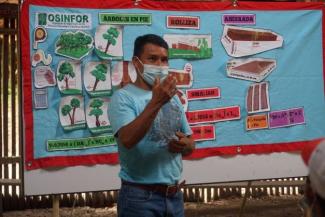
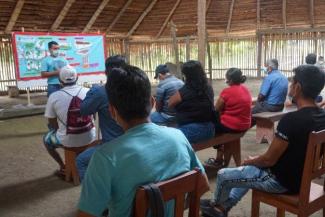
Teobaldo using tools from the Forest Backpack to teach members of the community.
I am very glad to be able to teach my native brothers and sisters. People are happy when I arrive because everyone wants to learn …. I have trained approximately 150 people who now know how to calculate timber, request permits, take a census of their trees, and remove only those allowed in their plan,” shares Teobaldo.
A virtual backpack
By March 2020, before the COVID-19 pandemic halted the process, the first six Indigenous trainers had trained nearly 600 community members from 25 communities in Loreto. These Indigenous leaders were accompanied by regional forest authority staff, who also learned how to use the tool.
The virtual environment resulting from the pandemic presented an opportunity to train other key stakeholders, including personnel from other government agencies who work on forest issues with Indigenous populations.

Virtual classes with tools from the Forest Backpack include lessons about preventing forest fires.
USAID and the USFS assisted OSINFOR in creating the “virtual backpack” and the methodology to train public servants virtually so that they would be ready to use the backpack once they were back in the field.
This new tool, created with assistance from USAID and the USFS, enabled collaboration among professionals from different agencies and helped introduce new topics that would eventually be added to the physical backpack, such as wildfire prevention and tools to help identify the legal origin of timber.
In 2021, the training process resumed. Now there are 157 Indigenous leaders who train their fellow community members in Loreto and three other Amazonian regions in Peru.
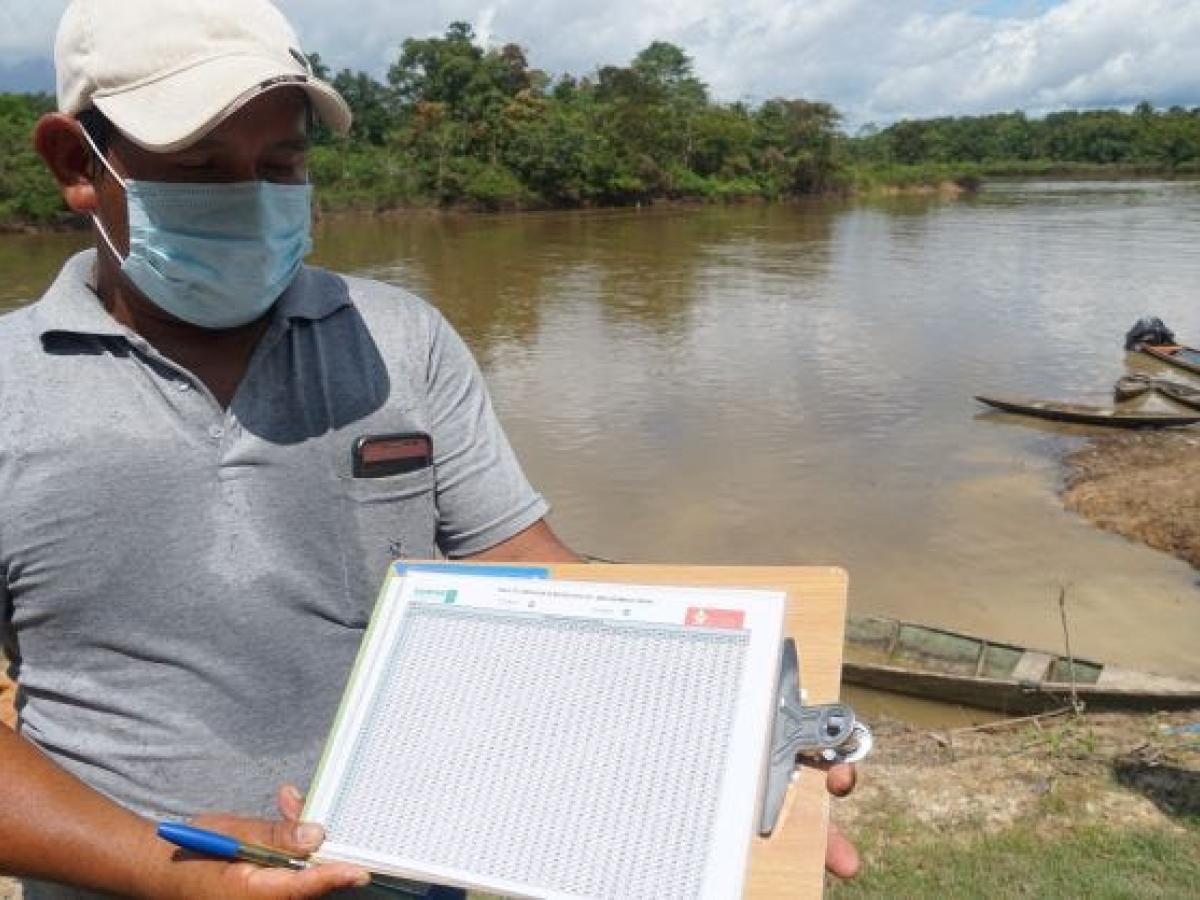

Sowing the future
With increasing vaccination rates in Peru, Teobaldo has returned to Pucaurquillo, this time with Sixto Luna, the head of the Loreto forest authority’s new community forest management unit.
Sixto joined the practical training session and visited one of the forest plots that the community has permission to use for commercial purposes.
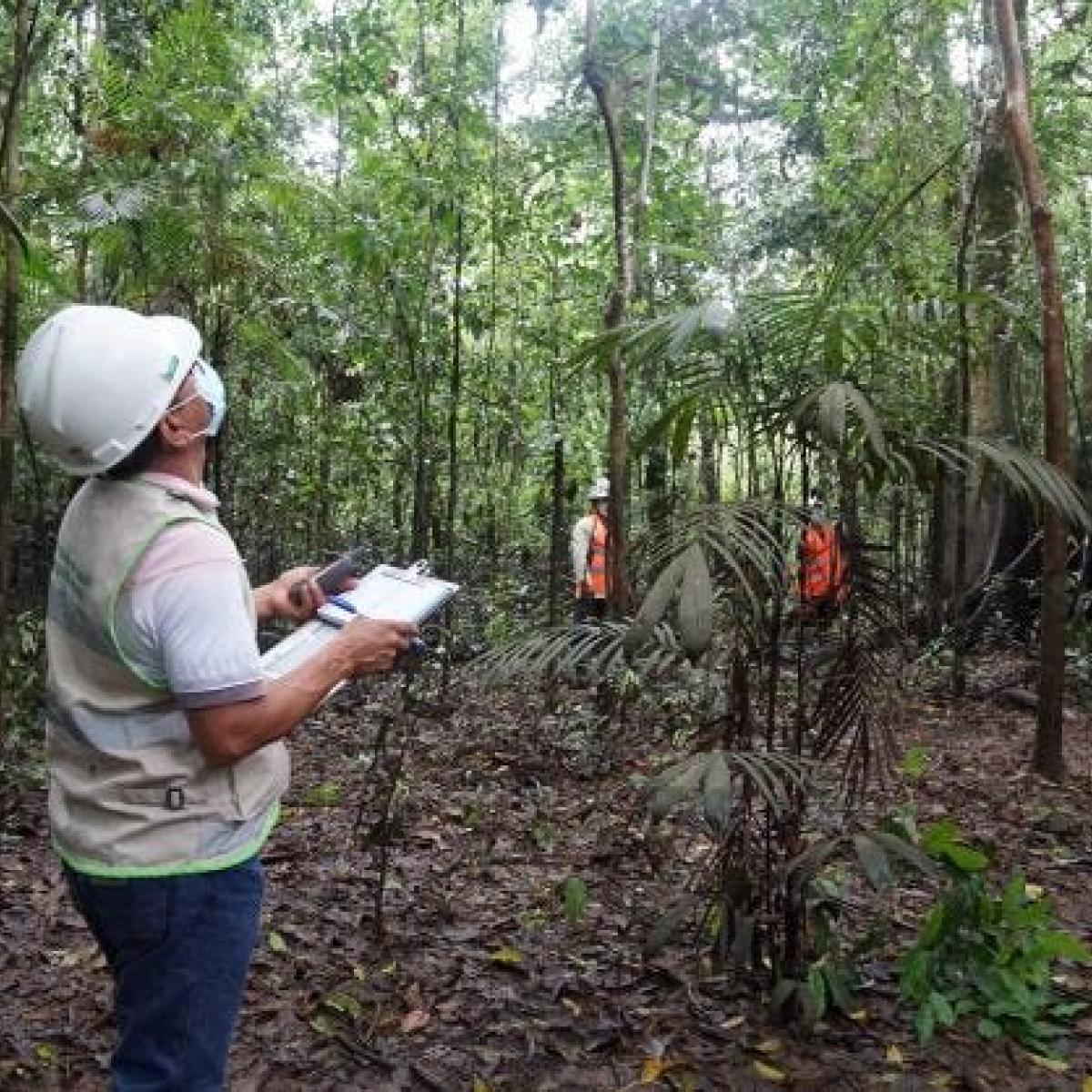

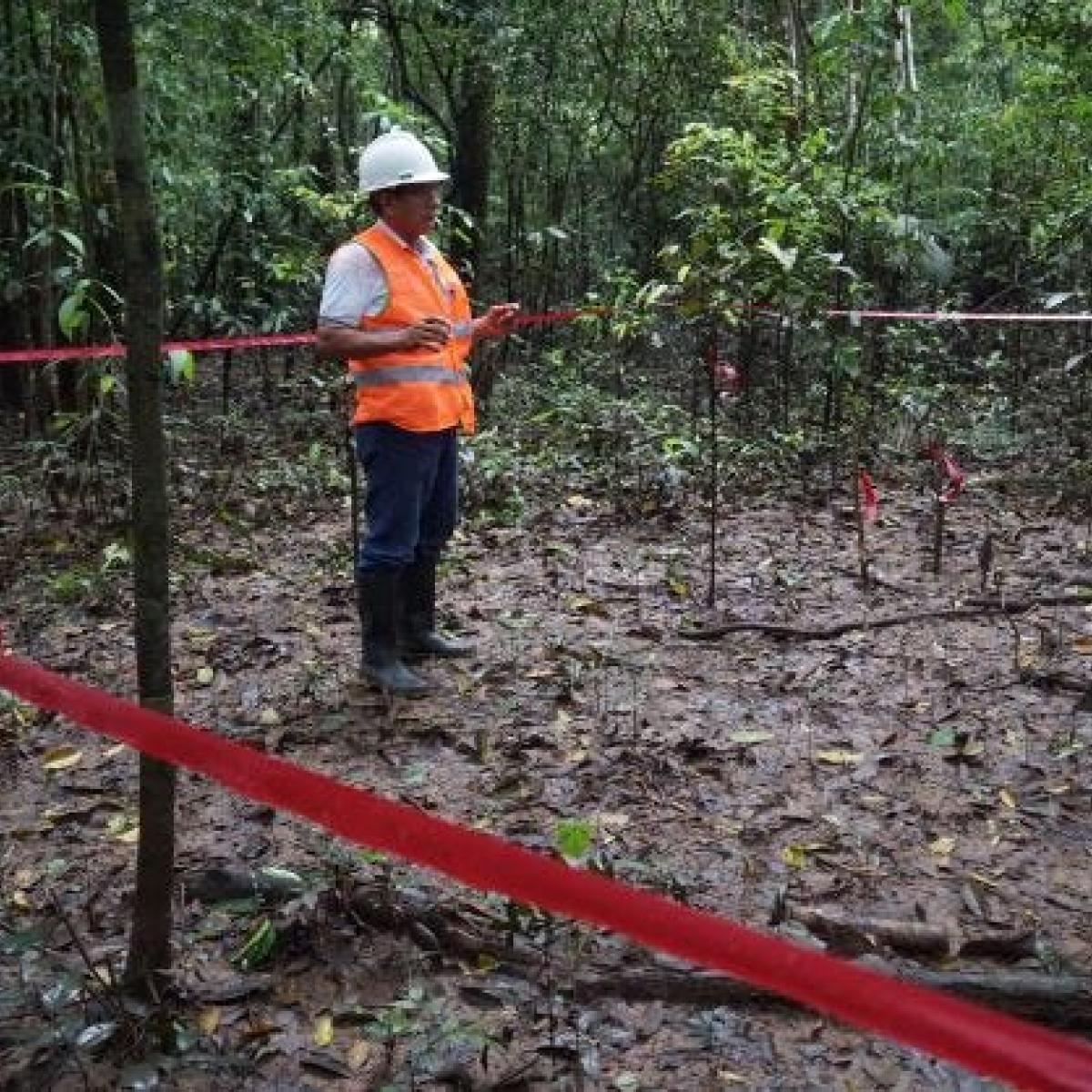
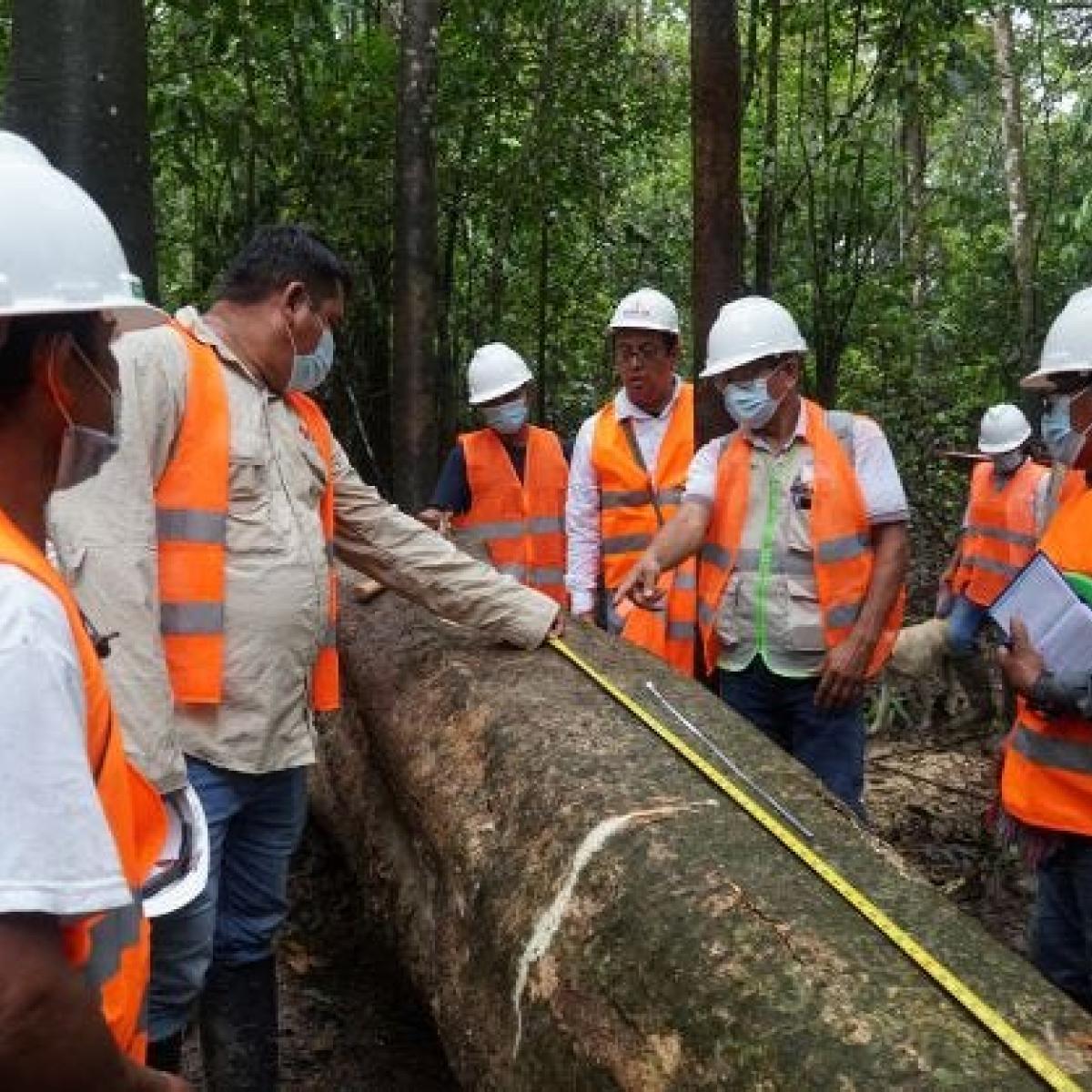
He is pleased to see the work of the community in developing and maintaining the seedbeds to ensure forest renewal. The trees registered as seedbeds produce seeds that will sprout and produce the next generation of trees.
Women play a critical role by collecting these seeds and replanting them in open areas that provide better growing conditions. In this way, the community is assisting natural reforestation.
I want all the communities to manage their forests legally. I am going to leave my forest backpack to my children, so that none of my brothers and sisters will make the same mistake in the future due to ignorance,” says Teobaldo.
Adds Isideo Ruiz Apu, leader of the Huitoto community of Pucaurquillo:
“The forest is our market, our hospital, our bank; through the forest we sustain our households and get what we need. Now we know how to make a deal with people to buy our wood at a fair price, and we have authorization for responsible logging that allows the forest to renew itself.
“There is no more illegal logging here.”
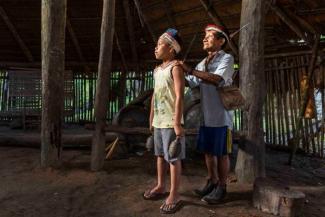
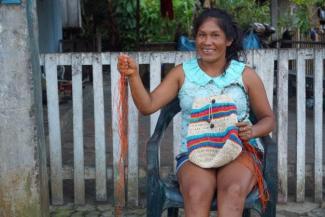
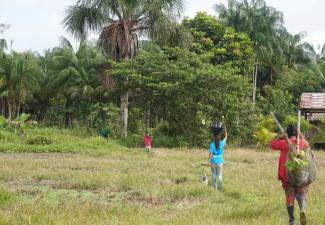
ABOUT THIS STORY
The Pucaurquillo community in Loreto, Peruvian Amazon, are set for a brighter future. Thanks to an assist from USAID and the U.S. Forest Service, they are educating themselves to combat illegal logging.
In 2013 the Government of Peru’s Forest and Wildlife Resources Oversight Agency (OSINFOR) created the Forest Backpack, or Mochila Forestal, a physical backpack with tools to help Indigenous community leaders monitor and conserve the forest.
Today the Mochila Forestal activity continues to be a valuable contribution to protecting the Amazon rainforest and is constantly evolving to meet the challenges posed by deforestation. In a cooperative effort with the Government of Peru, USAID and the U.S. Forest Service have incorporated technology such as GPS and drones into the backpack to help prevent environmental crimes and forest fires.
ABOUT THE AUTHORS
Liliana Lizárraga is a Communications Specialist with the U.S. Forest Service. Magali Ugarte and Noelia Gutierrez are Communications Specialists at USAID’s Mission in Peru.
Photos by Liliana Lizárraga, USFS.


